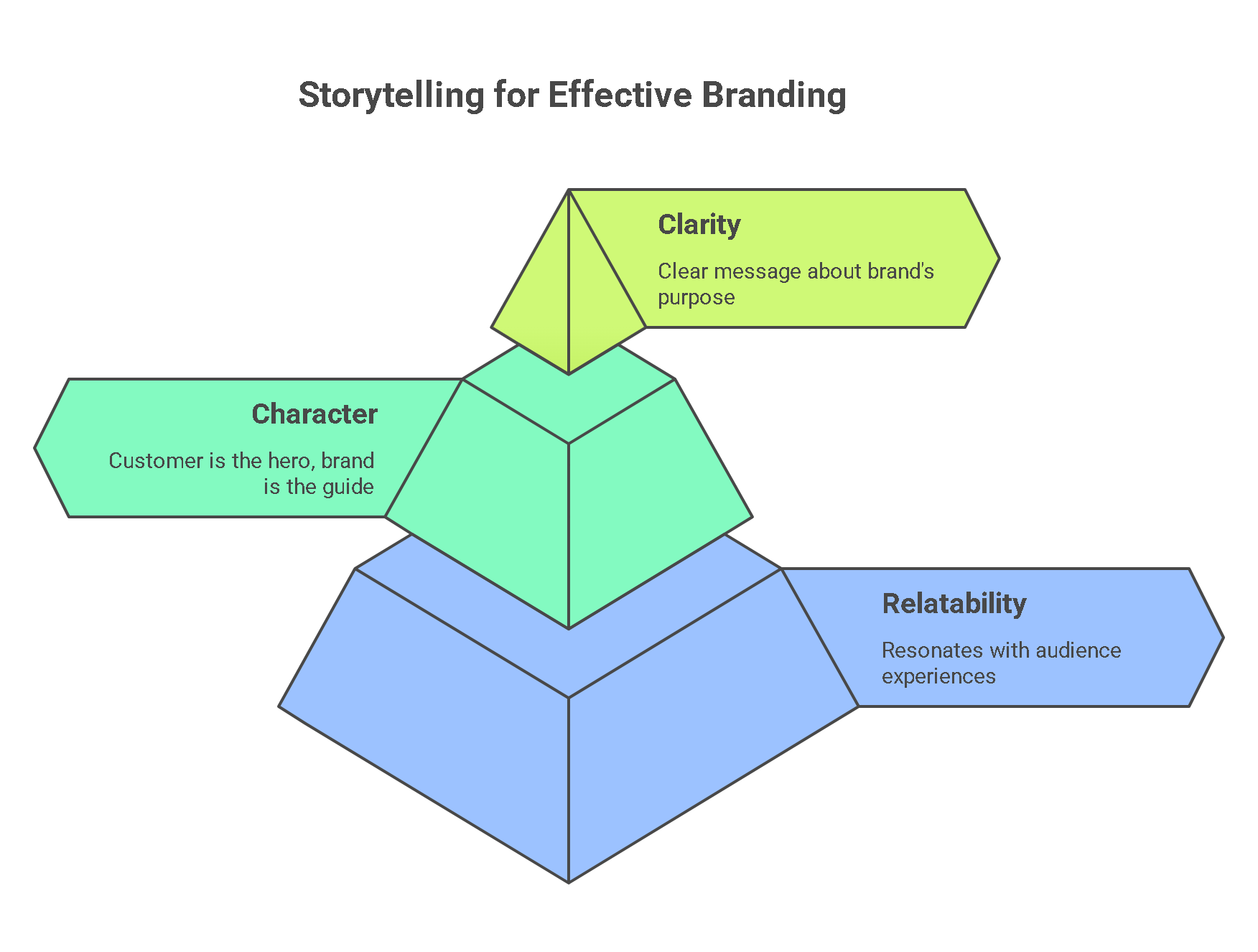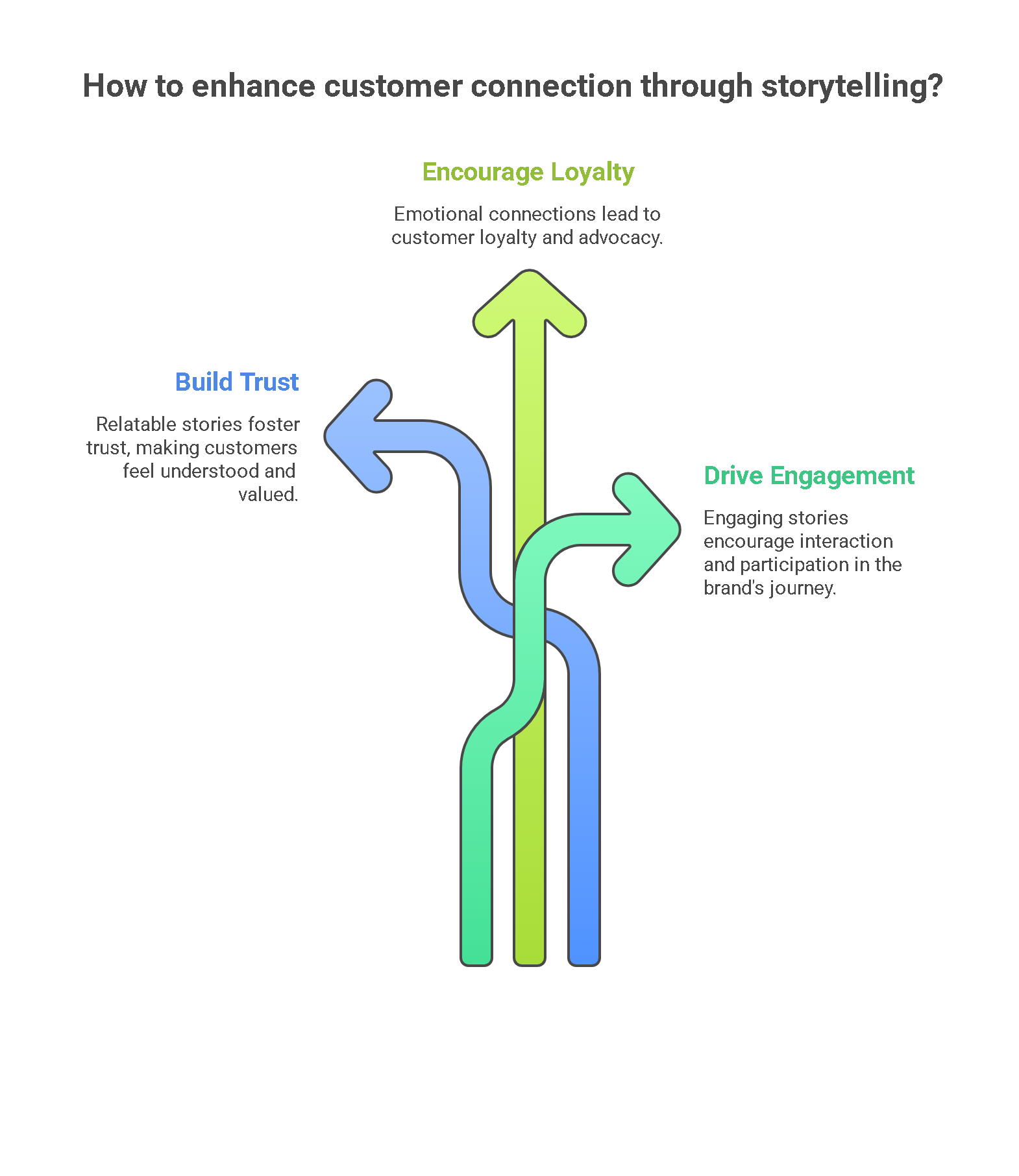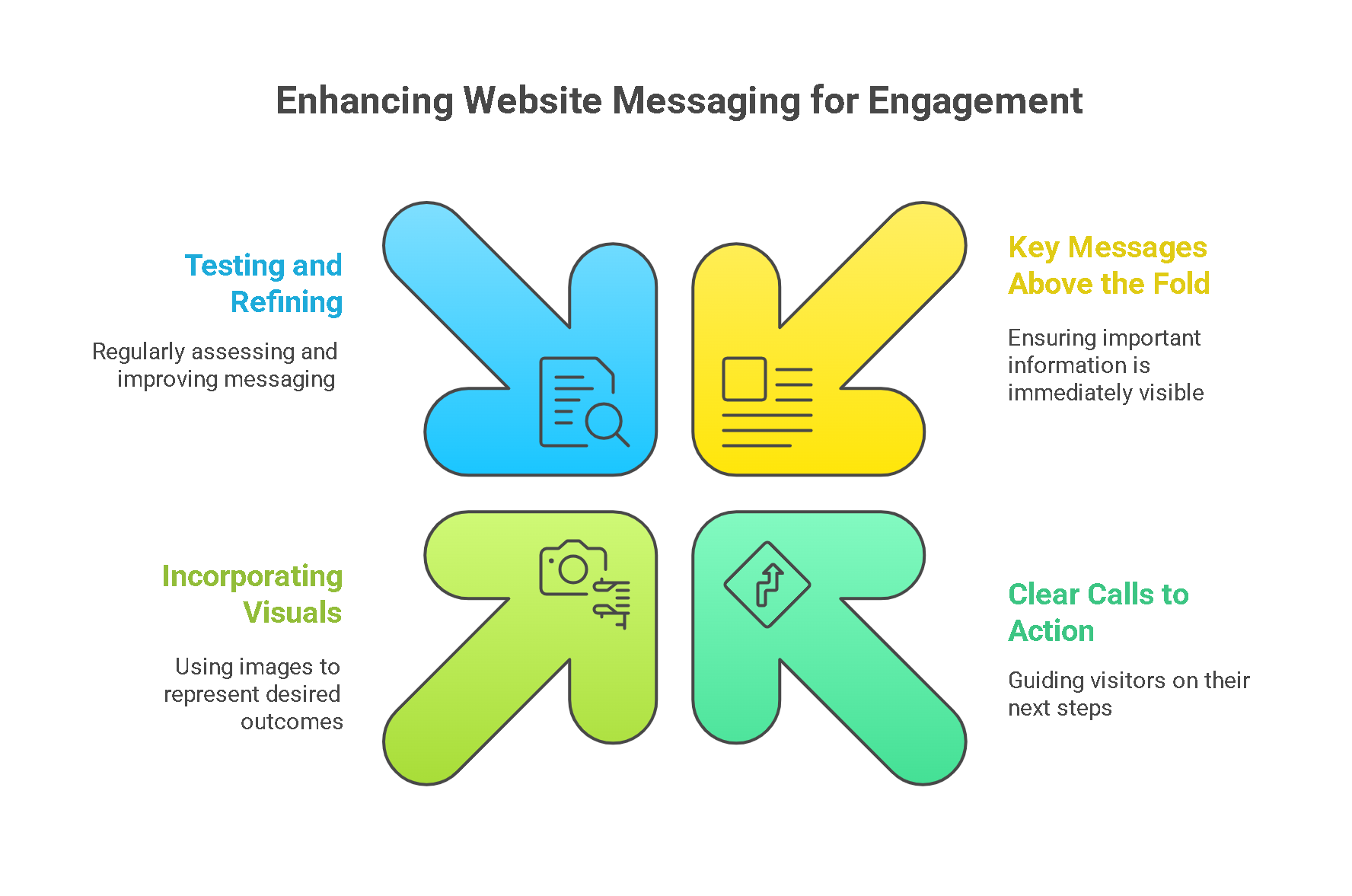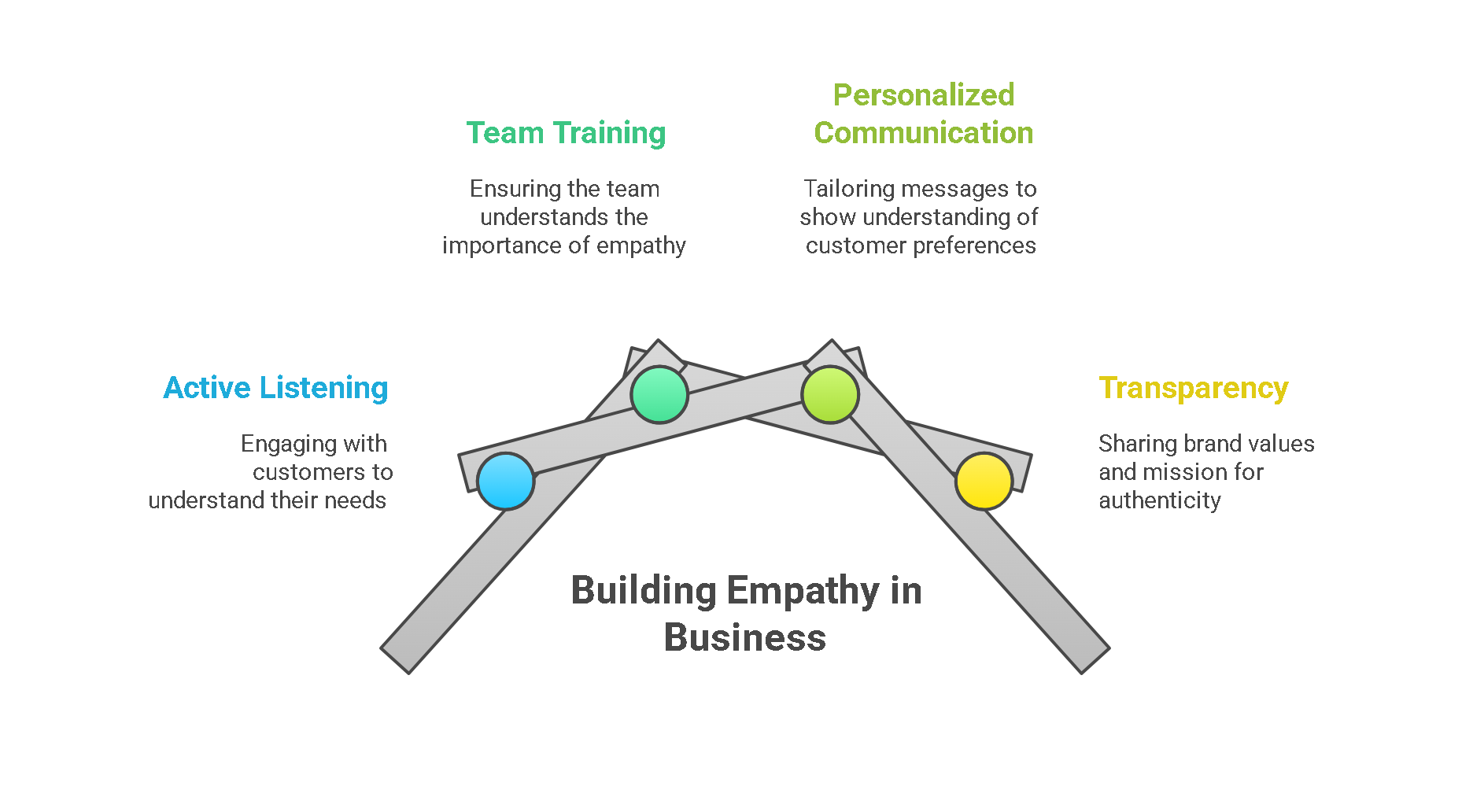Contents
When I first dug into Donald Miller’s ‘Building a StoryBrand,’ I couldn’t shake the feeling of déjà vu—it felt like a pep talk wrapped in marketing wisdom. The book revolves around a core idea: what if your customers are the heroes of your story? As I read through Miller’s insights, I found myself reflecting on my own experiences with brands that missed the mark by making the whole conversation about them instead of us. This epiphany led me to explore how storytelling can transform business communication, beckoning us to consider not just what we sell, but how we relate to our audience.
The Essence of Storytelling in Branding
Storytelling is more than just a buzzword in branding. It’s the heart of effective communication. When we think about branding, we often picture logos, colors, and catchy slogans. But at its core, branding is about connection. It’s about telling a story that resonates with people. As Donald Miller wisely said,
“A story is the shortest distance between two people.”
This quote encapsulates the power of narrative in bridging gaps between brands and customers.
Understanding the Core of Effective Branding Through Storytelling
At the essence of branding lies the ability to tell a compelling story. But what makes a story effective? Here are a few key elements:
- Relatability: The story should resonate with the audience. It needs to reflect their experiences, desires, and challenges.
- Character: In storytelling, the customer is the hero. The brand acts as a guide, helping them navigate their journey.
- Clarity: A clear message is crucial. Customers should quickly understand what the brand stands for and how it can help them.

When brands focus on these elements, they create a narrative that draws customers in. It’s not just about selling a product; it’s about inviting customers into a story where they play a vital role.
Examples of Brands That Thrive on Storytelling
Many brands have mastered the art of storytelling. Consider Nike. Their campaigns often feature athletes overcoming obstacles. This narrative inspires customers to see themselves as capable of greatness. Another example is Apple. They don’t just sell technology; they sell a lifestyle. Their stories focus on creativity and innovation, appealing to customers’ aspirations.
These brands understand that storytelling is not just an add-on; it’s integral to their identity. They engage customers by weaving narratives that reflect their values and vision.
Shifting Focus from Brand to Customer
One of the biggest mistakes brands make is focusing too much on themselves. They talk about their features, their awards, and their history. But what about the customer? When brands shift their focus to the customer, magic happens. They start to see customers not just as buyers but as partners in a journey.
In this customer-centric approach, brands ask questions like:
- What challenges does my customer face?
- How can my product help them?
- What transformation do they seek?
By answering these questions, brands can craft narratives that truly resonate. They become guides in their customers’ stories, leading them toward success.
How Crafting a Narrative Enhances Customer Connection
When brands tell stories, they create emotional connections. This connection is vital in today’s market. Customers want to feel something when they engage with a brand. They want to be part of a story that matters.
Crafting a narrative allows brands to:
- Build Trust: A relatable story fosters trust. Customers feel understood and valued.
- Encourage Loyalty: When customers connect emotionally, they are more likely to return. They become loyal advocates for the brand.
- Drive Engagement: Engaging stories encourage customers to interact, share, and participate in the brand’s journey.
In essence, storytelling in branding is about creating a shared experience. It’s about inviting customers into a narrative that reflects their own lives and aspirations. When done right, storytelling transforms branding from a transactional relationship into a meaningful connection.

Decoding the SB7 Framework
The SB7 Framework is a powerful tool for businesses looking to refine their messaging. It was created by Donald Miller in his book, “Building a StoryBrand.” This framework focuses on storytelling as a means to connect with customers. But what exactly does it entail? Let’s break it down.
Overview of the SB7 Framework Components
The SB7 Framework consists of seven key components:
- Character: The customer is the hero.
- Problem: Identify the problem they face.
- Guide: The brand acts as a guide.
- Plan: Provide a clear plan to solve the problem.
- Call to Action: Encourage the customer to take action.
- Avoid Failure: Highlight what they stand to lose.
- Achieve Success: Show the transformation they can expect.
Each of these components plays a crucial role in shaping customer perception. When we position the customer as the hero, we create a narrative that resonates. It’s not about us; it’s about them. This is where the magic happens.
How Each Component Shapes Customer Perception
Let’s dive deeper into how these components influence how customers view a brand:
- Character: By making the customer the hero, we empower them. They feel valued and understood.
- Problem: Identifying their problem shows that we recognize their struggles. This builds trust.
- Guide: When the brand becomes a guide, it positions itself as a partner in the journey.
- Plan: A clear plan reduces confusion. Customers appreciate straightforward solutions.
- Call to Action: A strong call to action motivates them to engage. It’s about making the next step easy.
- Avoid Failure: Highlighting potential pitfalls creates urgency. People are motivated by fear of loss.
- Achieve Success: Finally, showing the success they can achieve paints a picture of hope.

Real-Life Applications of the Framework
The SB7 Framework isn’t just theory. It has real-world applications across various industries. For instance:
- Financial Services: Companies like Dave Ramsey’s brand use the framework to guide clients through financial challenges.
- Health and Wellness: Fitness brands often position their customers as heroes on a journey to better health.
- Retail: Many retail businesses create campaigns that focus on solving customer problems, enhancing their shopping experience.
These examples show how versatile the SB7 Framework is. It can work for a mom-and-pop shop just as effectively as for a billion-dollar corporation.
The Role of Empathy in Creating Relatable Brand Narratives
Empathy is at the heart of the SB7 Framework. It’s about understanding customer needs. When we empathize, we can craft narratives that resonate. This connection is vital. It allows customers to see themselves in the story.
“Your customer is the hero of your story, not your brand.” – Donald Miller
This quote encapsulates the essence of the SB7 Framework. By focusing on the customer, we create a relatable narrative that fosters loyalty and engagement. It’s a shift from self-promotion to a customer-centric approach.
In conclusion, the SB7 Framework provides a structured approach to crafting messages that resonate with the target audience. By focusing on their needs and aspirations, we can create compelling narratives that drive engagement and conversions.
Messaging Clarity: The Key to Customer Engagement
In today’s fast-paced digital world, clarity in messaging is more important than ever. Have you ever visited a website and felt overwhelmed by the information? You’re not alone. Many consumers struggle with short attention spans. In fact, studies show that websites with clear messages see a 30% increase in engagement. So, how can businesses ensure their messages are clear and effective?
The Importance of Transparency in Communication
Transparency is crucial. When businesses communicate openly, they build trust. Customers want to know what they are getting into. They appreciate honesty and straightforwardness. Think about it: Would you rather buy from a brand that hides information or one that lays everything out clearly? The latter, right?
Crafting Messages That Are Simple and Engaging
Crafting simple messages is an art. It requires understanding your audience and their needs. Here are some tips:
- Use simple language: Avoid jargon. Use words everyone can understand.
- Be direct: Get to the point quickly. Don’t beat around the bush.
- Engage emotionally: Use stories or relatable scenarios. This helps customers connect.
Donald Miller puts it best:
“Clarity trumps complexity. There’s no magic bullet in business; there’s clarity and confusion.”
This quote emphasizes the need for straightforward communication. When your message is clear, customers are more likely to engage.
Examples of Brands That Utilized Clear Messaging
Many brands excel at clear messaging. For instance, consider Apple. Their marketing is simple and effective. They focus on the benefits of their products without overwhelming details. Another example is Nike. Their “Just Do It” slogan is memorable and powerful. It inspires action without confusion.
These brands show that clarity can lead to strong customer loyalty. When customers understand what a brand stands for, they are more likely to return.
Tips for Businesses to Enhance Website Messaging
Improving website messaging is essential for engagement. Here are some actionable tips:
- Place key messages above the fold: Ensure visitors see important information without scrolling.
- Use clear calls to action: Make it obvious what you want visitors to do next.
- Incorporate visuals: Use images that represent the desired outcome for the customer. A picture can say a thousand words.
- Test and refine: Regularly assess your messaging. What works today may not work tomorrow.
By following these tips, businesses can create a more engaging online experience. Remember, clarity leads to better user experience and higher engagement.

In summary, effective messaging is about understanding your audience and communicating clearly. By prioritizing transparency, simplicity, and engagement, businesses can significantly enhance their customer interactions. Let’s strive for clarity in our messaging and watch our engagement soar!
Empathy in Branding: Transforming Customer Relationships
Empathy is more than just a buzzword in today’s marketing landscape. It’s a powerful tool that can transform how brands connect with their customers. But how exactly does empathy lead to deeper customer loyalty? Let’s explore this concept further.
1. How Empathy Leads to Deeper Customer Loyalty
When brands show genuine understanding of their customers’ feelings and needs, they create a bond. This bond fosters trust. Trust is the foundation of loyalty. Think about it: when we feel understood, we are more likely to stick around. We want to support brands that resonate with us.
Empathy allows brands to step into their customers’ shoes. They can see the world from their perspective. This understanding helps brands tailor their messages and offerings. It’s not just about selling a product; it’s about solving a problem. When customers feel valued, they become loyal advocates.
2. Creating a Brand That Offers Transformation
What if your brand could do more than just sell products? What if it could offer transformation? This is where empathy shines. Brands that focus on transformation rather than transactions create a deeper connection with their audience.
- Identify the Transformation: What change do you want to help your customers achieve?
- Communicate Clearly: Use simple language to explain how your brand can facilitate this change.
- Showcase Success Stories: Share testimonials or case studies that highlight real transformations.
By positioning your brand as a guide in your customers’ journeys, you create a narrative that resonates. As Donald Miller wisely states,
“Empathy combined with competency is what turns a brand into a guide for customers.”
3. Case Studies Highlighting Empathetic Brands
Let’s look at some brands that have successfully integrated empathy into their marketing strategies. These examples can inspire us all.
- Airbnb: They focus on creating a sense of belonging. Their messaging emphasizes community and connection, making travelers feel at home.
- Patagonia: This brand champions environmental causes. They connect with customers who care about sustainability, positioning themselves as advocates for the planet.
- Dove: Their campaigns celebrate real beauty. By promoting body positivity, they resonate deeply with their audience, fostering loyalty.
These brands show that empathy can lead to meaningful relationships with customers. They don’t just sell products; they sell values and experiences.
4. Tips for Incorporating Empathy in Business Practices
Now that we understand the importance of empathy, how can we incorporate it into our own business practices? Here are some tips:
- Listen Actively: Engage with your customers. Use surveys, social media, and feedback forms to understand their needs.
- Train Your Team: Ensure that everyone in your organization understands the importance of empathy. This should be part of your company culture.
- Personalize Communication: Use customer data to tailor your messages. Show that you understand their preferences and pain points.
- Be Transparent: Share your brand’s values and mission. Customers appreciate honesty and authenticity.
Incorporating empathy into your branding is not just a strategy; it’s a mindset. It requires ongoing effort and commitment.
As we navigate the ever-changing landscape of branding, let’s remember that empathy is key. It’s not just about what we sell, but how we make our customers feel. By embracing empathy, we can transform our customer relationships and build lasting loyalty.

Sustaining Engagement: Beyond the Sale
In today’s competitive market, it’s not enough to just make a sale. We need to think beyond that. The real challenge lies in sustaining engagement with our customers. This means understanding the significance of lead generation and nurturing relationships. But how do we do that effectively?
The Significance of Lead Generation and Nurturing Relationships
Lead generation is the lifeblood of any business. It’s about attracting potential customers and guiding them through the buying process. But what happens after the sale? This is where nurturing relationships comes into play. When we build strong connections with our customers, we create a loyal base that keeps coming back.
Think of it this way: If you only focus on making a sale, you’re like a one-hit wonder in music. Sure, you might have a catchy song, but what happens after that? To sustain engagement, we need to keep our customers interested and invested in our brand. This can be achieved through regular communication, personalized experiences, and showing genuine care for their needs.
Building a Referral System for Repeat Business
One of the most effective ways to ensure repeat business is by creating a referral system. This is not just about asking for referrals; it’s about building a network of satisfied customers who are willing to share their positive experiences. Here’s how we can do it:
- Offer incentives: Give customers a reason to refer others. This could be discounts, freebies, or exclusive access to new products.
- Make it easy: Simplify the referral process. Provide customers with shareable links or templates they can use to spread the word.
- Show appreciation: Always thank customers for their referrals. A simple thank-you note can go a long way in nurturing that relationship.
As Donald Miller wisely said,
“Nurturing relationships leads to engagement that lasts beyond a single sale.”
This is the essence of a successful referral system.
Creating a Lasting Brand Impact
Creating a lasting brand impact requires more than just a great product. It’s about crafting a narrative that resonates with customers. We need to position our customers as the heroes of our story. This means understanding their challenges and showing them how our brand can help them overcome these obstacles.
By doing this, we not only enhance our brand’s image but also foster loyalty. Customers are more likely to stick around if they feel connected to our brand’s mission and values. It’s about creating a community where they feel valued and understood.
Maintaining Clear Communication with Customers
Finally, let’s talk about communication. It’s crucial to maintain clear and consistent communication with our customers. This means keeping them informed about new products, updates, and any changes within the company. But it’s not just about sending out newsletters or promotional emails. It’s about engaging in two-way conversations.
Ask for feedback. Listen to their concerns. Show them that their opinions matter. This not only builds trust but also encourages customers to engage more with our brand.
In conclusion, sustaining engagement goes beyond just making a sale. It’s about nurturing relationships, building a referral system, creating a lasting brand impact, and maintaining clear communication. By focusing on these areas, we can ensure that our customers remain engaged and invested in our brand over time. After all, effective marketing is not merely about closing a sale but creating a system that keeps customers coming back for more.








